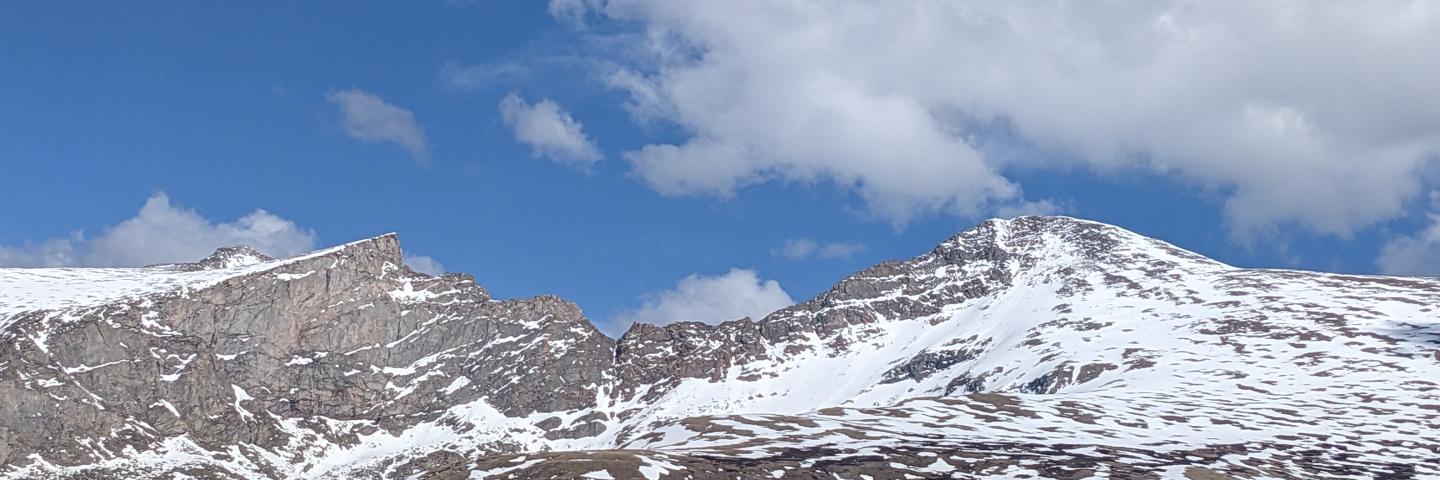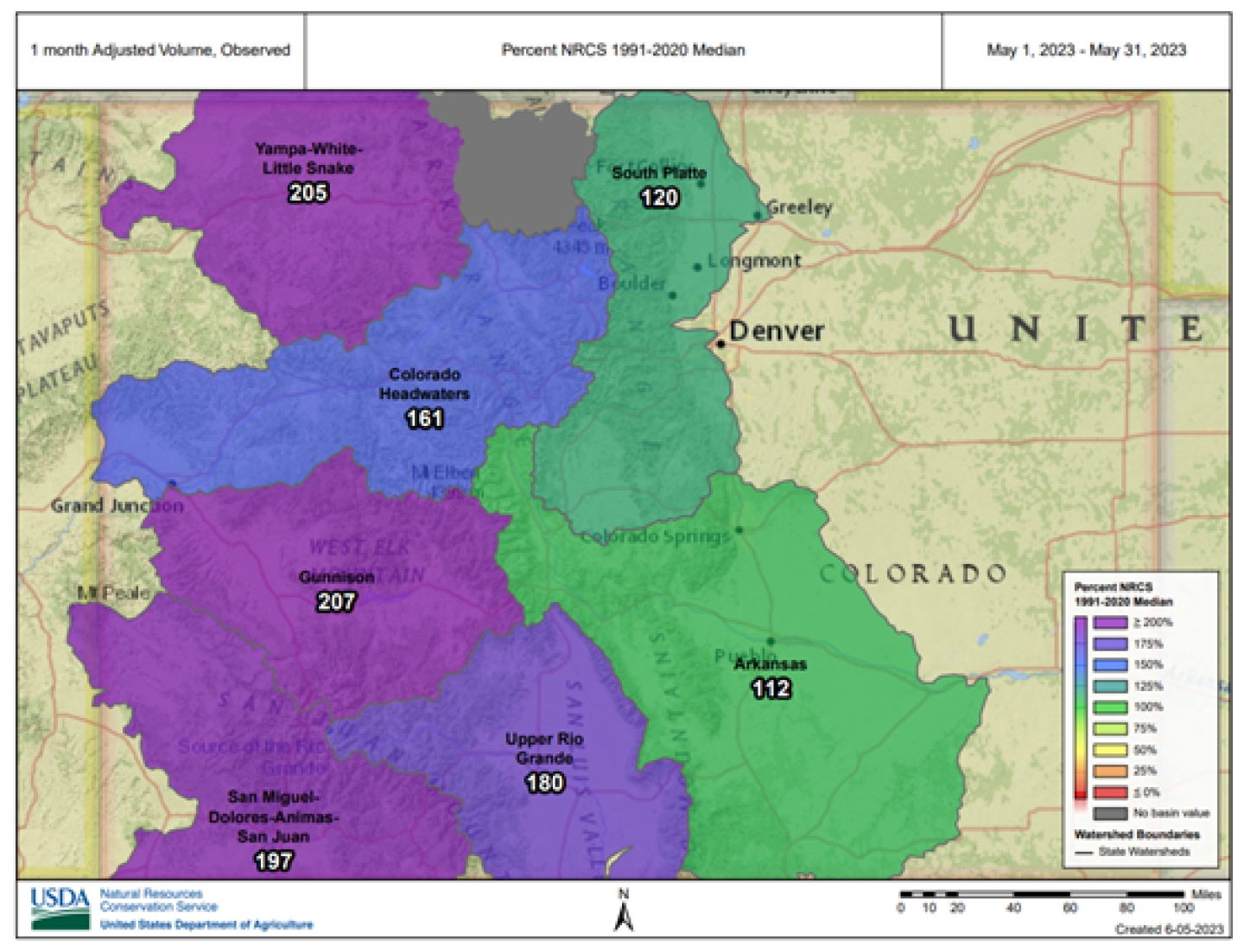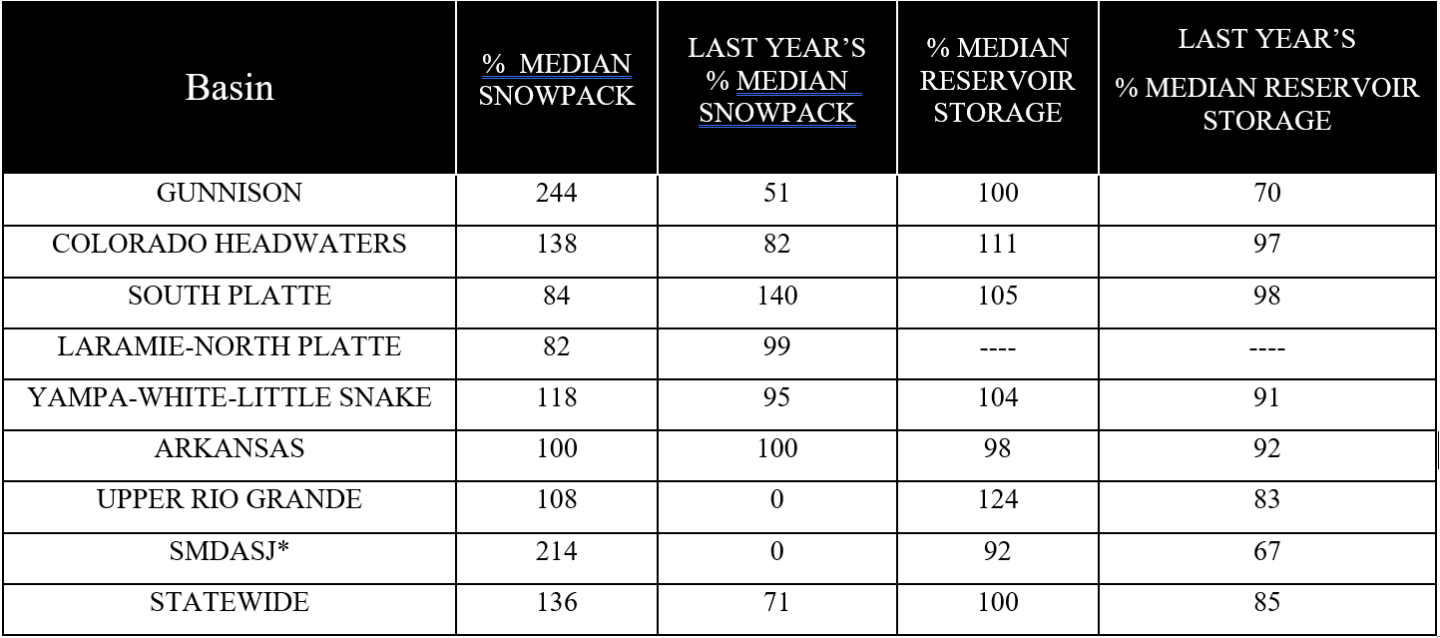Well above Normal Streamflow Volumes Observed Across Colorado in May

Above normal streamflow volumes were observed in all major basins of Colorado during the month of May. Across Western Colorado streamflow volumes were near to above 200 percent of normal total monthly volumetric flow.
Denver, CO – June 7th, 2023 – Above normal streamflow volumes were observed in all major basins of Colorado during the month of May. Across Western Colorado streamflow volumes were near to above 200 percent of normal total monthly volumetric flow. Following the significant streamflow volumes during May the streamflow forecasts for the June through July period are for a lower percent of normal than the full April through July period. However, substantial volumes are still anticipated in many parts of the state. NRCS Hydrologist Karl Wetlaufer comments that “Even with significant snowmelt driven runoff in the month of May well above normal streamflow volumes are still anticipated through June and July particularly across much of the Western Slope and the Rio Grande Basin.” The averaged streamflow forecasts in the Colorado, Arkansas, and North Platte are for near normal volumes over the next two months but with considerable variability. Wetlaufer continued “The South Platte Basin should anticipate large discrepancies in June-July streamflow volumes between the drier mainstem headwaters and the tributaries of the Northern Front Range where flows are forecasted to be largely below, but much closer to normal volumes.”

Ample streamflow in April and May has greatly improved reservoir storage volumes in the basins of Colorado that have struggled recently. Reservoir storage in the Gunnison and the combined San Miguel–Dolores-Animas-San Juan River basins has risen from about 70 percent of normal on April 1st to 100 and 92 percent, respectively, on June 1st. Wetlaufer notes “This month is the first time since May, 2020 that total reservoir storage in the State of Colorado is above the median volume for a given month. This is great news from a water supply standpoint both for this summer and going forward into future years.” Currently all major basins in Colorado are holding between 92 and 114 percent of normal reservoir storage for June 1st. These values will also likely continue to increase over the coming month in most basins of the state.
While we never fully know what the future may hold, so far Water Year 2023 has been a welcome reprieve from the previous three years with above normal snowpack, precipitation, and streamflow runoff across much of the state. Some areas that stand out as remaining drier than most include basins flowing out of the Sangre de Cristo Mountains and the headwaters of the main stem South Platte. That said, those regions have fared substantially better than Western Colorado with respect to accumulated precipitation over the last month, improving hydrologic and drought conditions. “In addition to how this water year has improved hydrologic conditions such as streamflow and reservoir storage, dramatic improvements have been observed in drought designations across the state since last fall” Wetlaufer concluded.
Colorado’s Snowpack and Reservoir Storage as of June 1st, 2023


